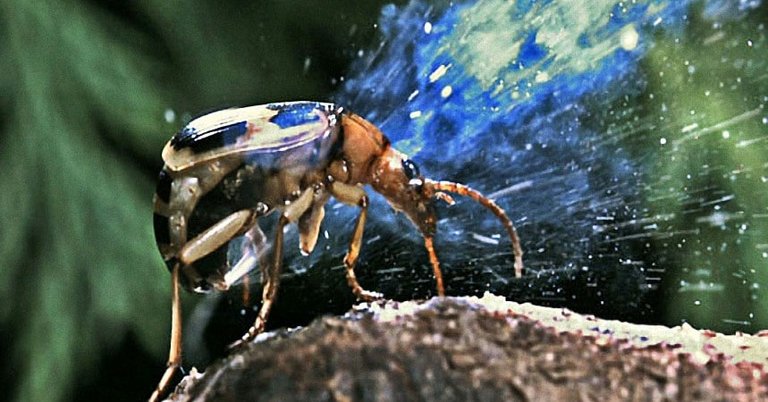
In the animal world, beetles are part of the most diverse order in species. It is about the order (Coleoptera) with more than 375,000 species of insects. This order is conformed by a family of name (Carabidae) in which we can appreciate different adéfagos known as bombardier beetles. We can find these little ones in different genera, subfamilies and tribes of the aforementioned family.
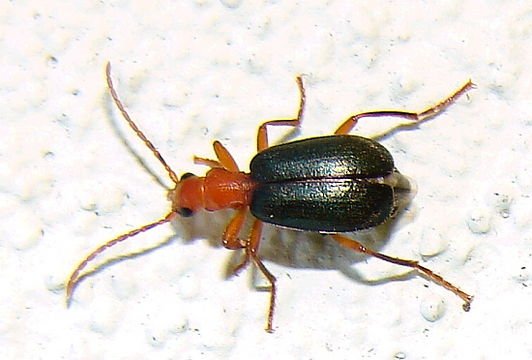
They are small insects, therefore, they are vulnerable to larger predators such as toads, frogs, birds and insectivorous mammals, among others. They can fly short distances but they are terrestrial insects, predominate where they find fallen leaves in search of food, their diet is based on earthworms, small worms and slugs, just to name a few. They are small nocturnal animals, but they have a surprising peculiarity when they defend themselves.
Defensive methods
Wasps and bees use their sting to defend themselves against their enemies. Another, like the stick insect, is an expert in camouflage, confusing its enemies by imitating its environment. But the bombardier beetle has a more advanced defense mechanism, it expels an irritating chemical substance so hot that it reaches 100 ° ʗ. As if that were not enough, he punishes his predators with up to 50 shots that reach 5 cm away. A small insect with an incredible chemical weapon that only uses when it feels threatened.
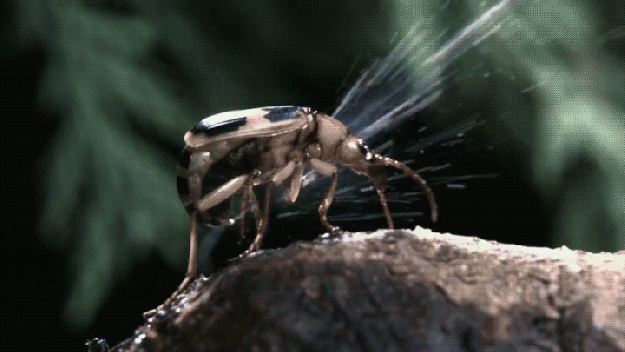
How is this defensive mechanism carried out?
Everything begins inside the abdomen, where two individual chambers are located, each with a different substance, when they mix, they cause an explosion. The first tank is loaded with a concentrated hydroquinone substance. Only 2% of this chemical is used in cleaning products and skin whiteners.
The other chamber contains hydrogen peroxide, commonly known as dioxogen (H2O2), this chemical is a strong oxidizing agent.
Although these chemicals are in different chambers, they are also accompanied by an inhibitory enzyme that prevents the explosive reaction if they are mixed inside the beetle.
When he feels in danger, he deposits the two substances in a third chamber, where another anti-inhibitor enzyme comes into play that counteracts the action of the previous one. Then, the hydrogen peroxide oxidizes the hydroquinone transforming it into quinone after a rapid and violent exothermic reaction, the result of this reaction reaches a boiling point of 100 ° ʗ, then all this quinone is released together with the remaining water of the substances mixed causing burns and irritation in predators that underestimate it.
Scientific studies.
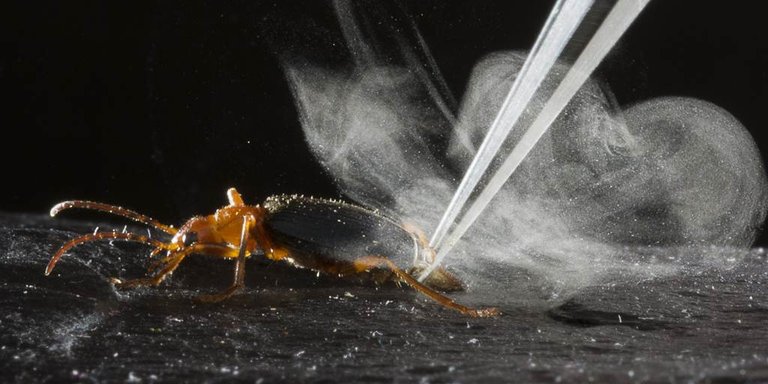
The studies with toads show that some bombardier beetles after being swallowed bombard the stomach of the predator to cause a regurgitation that they take advantage of to escape unharmed if they are lucky.
Backed by the Fujiwara Natural History Foundation, scientists Shinji Sugiura and Takuya Sato conducted experiments with different toads and bombardier beetles. The results showed that 43% of the toads regurgitated the beetles after 12 to 107 minutes.
Scientists say that one of the possibilities of survival depends on the size of the predator and the prey. Large beetles escaped more often than small beetles. And small toads regurgitate beetles more often than large toads.
Within the investigations it was also shown that some species of toads tolerate the strong chemical substances of the bombardier beetles, other specimens did not run with the same fate, therefore, the life of the insect also depends on the variation of amphibian species.
In this video you will appreciate how a beetle is regurgitated by a toad and goes walking unharmed.
The bombardier beetles have entertained science with its peculiarities and there are still many species to study and who knows what they can teach us.
Source of some references:
http://rsbl.royalsocietypublishing.org/content/14/2/20170647
http://hablemosdeinsectos.com/escarabajo-bombardero/
https://es.wikipedia.org/wiki/Brachininae
https://es.wikipedia.org/wiki/Hidroquinona
https://es.wikipedia.org/wiki/Per%C3%B3xido_de_hidr%C3%B3geno
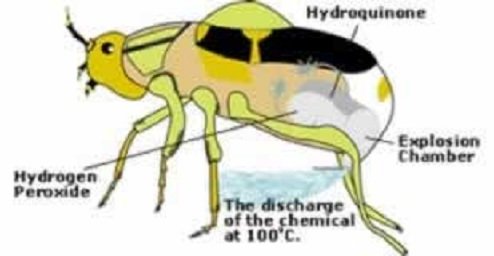
The beetle spitting hot substance is incredible. Sometimes I am amazed what our nature has.
You can find many interesting things.
Nice post! As a chemist I find these beetles fascinating. Insects in general show a lot of interesting behaviour and mechanisms.
You´ve earned my sub and I´m looking forward to more of such qualitative publications!
It entertains me to investigate nature. Thanks for your visit.
Please change images to CC0.
Thank you
(steemstem curator)
Thank you for your observation, I took it into consideration but I did not find the necessary ones and it would lower the quality of the publication, so my next publications will be more appropriate. I appreciate the recommendation.
good post friend I invite you to see my blog